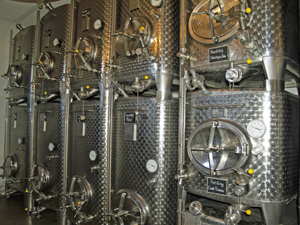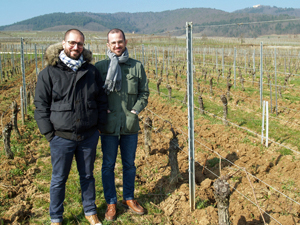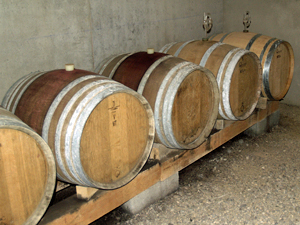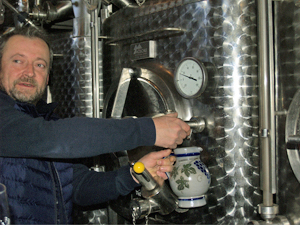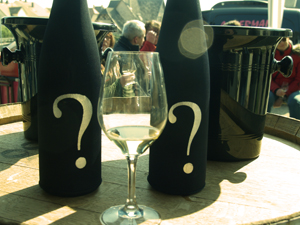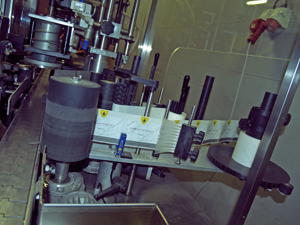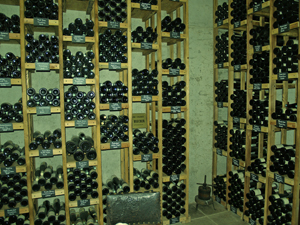Chéli and Jérôme, the passionate winemakers at Château Cohola, welcomed us warmly to their organic winery for a Discovery Experience Day. The aim of this wine experience day was to learn about the work required in the vineyard to nurture the vines and produce the best quality grapes possible.
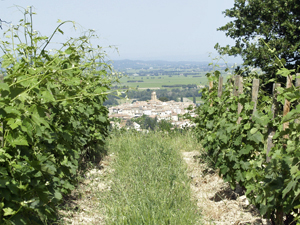
Perched in the foothills of the Dentelles de Montmirail ridge, the winery has a stunning view over to the village of Sablet and the plain of Côtes du Rhône vineyards that stretch below. This was our backdrop for the introductions to the day by Mark, the founder of Gourmet Odyssey, and Chéli and Jérôme from Château Cohola.
We then headed out into the vineyards, pausing on the way for Jérôme to explain the work done in the vineyards during the winter months, notably the different pruning methods used for different grape varietals, and the organic methods used to nurture and protect the vines.
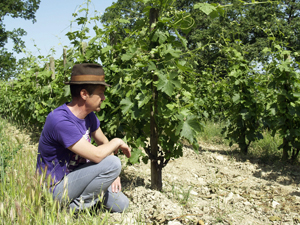
At this time of year, the vines grow rapidly, and it’s a very busy period to try and keep everything in order, and so the help of our winemakers-for-a-day was very much appreciated! As always with a Gourmet Odyssey Wine Experience Day, we had some work to do to attach the staked vines, or “échalas” vines.
The vineyards at Château Cohola are spread among 15 terraces, some of which are fairly small and unpractical for tractors and heavy machinery to access. In such places the échalas system is used to provide support to the vines that would normally be done by training wires. A wooden stake is positioned next to each vine that has been pruned using the goblet method, and once the branches have grown to around a metre in length they are bunched together and tied around the stake using a piece of raffia. This will help the vine support the weight of the grapes to come and reduces the risk of branches being damaged by wind, something that is often present in the Rhone Valley.
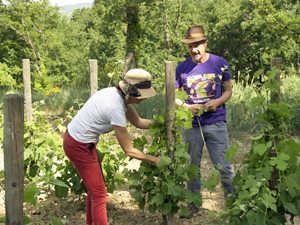
Chéli and Jérôme demonstrated how to attach the vines, and then in pairs we spread out in the vineyard to have a go ourselves. Standing on opposite sides of the vine, we collected together all of the vine branches. One person hugged the vine to keep them all together, whilst the other tied a piece of raffia around the stake and branches to keep them in place.
It took us a few vines to get the hang of it, but we were soon experts, and we became much quicker. It’s also a very rewarding task, as you can instantly see the result of your work. When we arrived in the vineyard, the branches were falling in all directions, but at the end everything was very orderly, and we could walk easily around the vines. This also has the benefit of lifting the branches off the ground and from becoming entwined with the surrounding vines which would increase the risk of disease spreading.
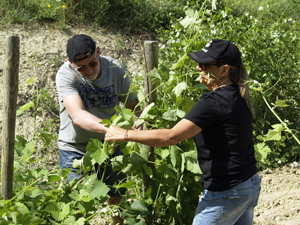
Jérôme then guided us up the hill, explaining the different plants along the way, until we arrived at another stunning viewpoint looking over the Rhone Valley below. Here we enjoyed an aperitif of the Château Cohola rosé wine, with some local olives and cheese.
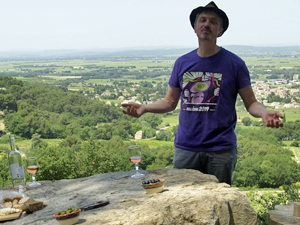
Back at the winery, we sat down to lunch in the shade of the platane trees. With the deliciously fresh crespou starter we enjoyed the Château Cohola Cuvée Fruit red wine. To accompany the filet mignon and ratatouille main course, we tasted the 2018 vintage of the Château Cohola Sablet, the red wine that is chosen for the Gourmet Odyssey Wine Experience. The local goat’s cheese was served with the delicious honey made from the winery’s own beehives and the 2021 Château Cohola Sablet white wine. Lunch ended with a strawberry tart and two more wines. First the Château Cohola TBF red wine, which is made using wine aged in a clay amphorae and oak and stainless-steel barrels, followed by the powerful and full-bodied Cor Hominis Laetificat Châteauneuf-du-Pape.
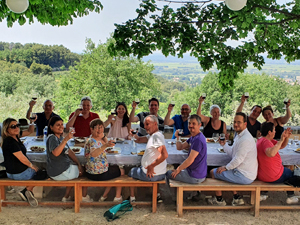
After lunch, we visited our adopted vines that will produce the grenache grapes used to make the wine that we will receive at the end of the experience.
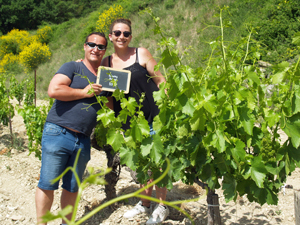
Jérôme then explained the work that remains to be done between now and the harvest before we headed down into the village of Sablet for a quick tour of the chai.
Chéli and Jérôme showed us the press used to extract the juice from the grapes for the white and rosé wines, and the vats where the grape juice will ferment, and then the barrel room where the wines are aged. We’ll be spending more time here during the Harvest and Vinification Experience Days.
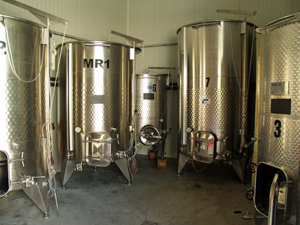
Many thanks to all for a fantastic day! We’ll think a little differently and will appreciate the work that goes into making wine a bit more when we open that next bottle of wine!



